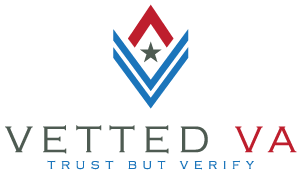Paying off all your debt can seem like an impossible task, especially if you can only manage to pay the minimum required amount each month. Fortunately for you, there are multiple strategies to help you pay off that balance. Two of these strategies are the snowball and avalanche methods. Learn about each method to decide which one will work best for you.
Using the snowball method to pay off debt
The larger your debt grows from having multiple loans and credit cards, the more confusing it can be for you to know which debt to start paying off first. The snowball method of reducing your debt requires you to pay off the smallest loan you possibly have. Once that loan balance is reduced to zero, your money goes towards paying off the next smallest loan. The snowball method is organized into three parts to ensure you successfully pay off your debt.
- Track all your debt owed. Make a list of all your accounts to which you owe money. Write down the total amount, the minimum payment required, and the due dates for each account. Organize your list in order from least to most debt owed.
- Budget accordingly. Calculate how much extra you can afford to add to the minimum payment on your smallest debt. Keep in mind that you must afford to pay at least the minimum monthly amount for the rest of your outstanding debts. Paying even just a little extra than the minimum amount on your smallest debt can settle the debt much quicker.
- Carry payments over to progress. Once you settle your smallest debt with the money you budgeted, you carry that payment over and put it towards the next smallest debt. The amount you are using to pay down your debts continues to grow as you settle one account and move to the next, hence the term ‘snowball.’
Example snowball method scenario
If this was your outstanding debt, your loans would be prioritized this way to pay off. When the credit card debt is paid, you would apply the $200 from that debt to the car loan; paying at least $399 each month to pay off that loan. When you get to the student loan, you would be making a payment of least $552 per month to pay off that loan.
- $5,000 credit card debt at 17% interest – $200 minimum monthly payment
- $9,000 car loan at 2.95% interest – $199 monthly payment
- $12,000 student loan at 4.15% interest – $153 monthly payment
Benefits of paying off debt using the snowball method
If you’re only making the minimum monthly payment on your credit card, you are probably not seeing the balance reduced. The snowball method allows you to receive satisfaction by seeing one loan or credit card account debt paid in full. You will see a decrease much faster in the amount owed because the smaller loans are settled first. Faster results by implementing this method over multiple debts will keep you motivated to keep going.
Using the avalanche method to pay off debt
With the avalanche method, you will pay off the debt with the highest interest rate first. In this method, you pay the minimum payment on all your outstanding accounts and then use your remaining money to pay off the loan or debt with the highest interest rate. Similar to the snowball method, there are three parts.
- Track all your debt owed. Make a list of all your credit card and loan accounts to which you owe money. Write down the total amount, the minimum payment required, and the due dates for each account. Organize your list in order from highest to lowest interest rate.
- Budget accordingly. Calculate how much extra you can afford to add to the debt with the highest interest rate. Keep in mind that you must afford to pay the minimum monthly amount for the rest of your debt owed.
- Carry payments over to progress. After paying off the debt with the highest interest, take the monthly payment and the extra you saved and carry it over to the debt with the next highest interest rate. You are chipping away at your debt by starting at the top and working your way to the bottom.
Example avalanche method scenario
If this was your outstanding debt, your loans would be prioritized this way to pay off. When the credit card debt is paid, you would apply the $200 from that debt to the student loan; paying at least $353 each month to pay off that loan. When you get to the car loan, you would be making a payment of least $552 per month to pay off that loan.
- $5,000 credit card debt at 17% interest – $200 minimum monthly payment
- $12,000 student loan at 4.15% interest – $153 monthly payment
- $9,000 car loan at 2.95% interest – $199 monthly payment
Benefits of paying off debt using the avalanche method
Attacking your debt from the top first instead of the bottom prevents you from spending a ton of money on interest rates. Starting with the debt with the higher interest rates also speeds up settling your debt. Compared to the snowball method, the avalanche method is the best way to save money and time.
Whichever method you select, it is essential to pay every other loan or credit card on time every month. When you have paid off a credit card, don’t close the account as Credit History is one of the contributing factors to your credit score. Both methods exist to help you settle your debt, and neither is specific to one person. If you need to see quick results to stay motivated, start by using the snowball method. If you do not need to see immediate results to stay motivated and your goal is to save more money long-term, consider using the avalanche method.





